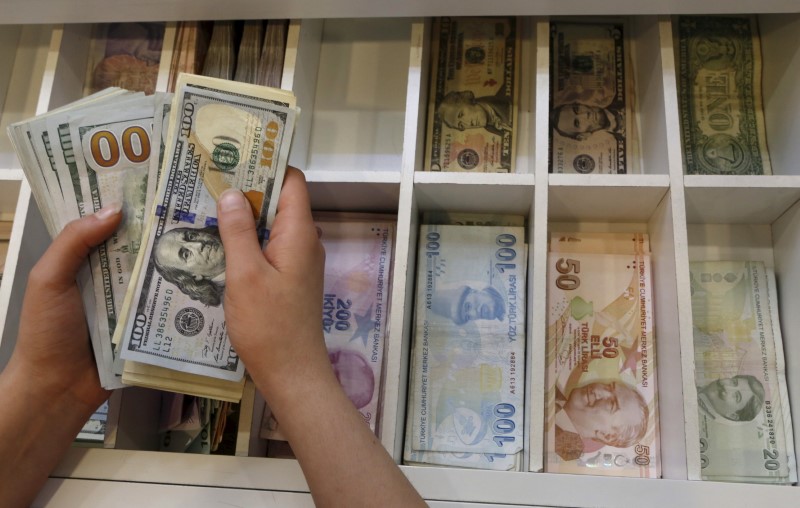By Vivek Mishra and Vuyani Ndaba
BENGALURU/JOHANNESBURG (Reuters) – Emerging market currencies won’t stage significant recoveries against the dollar in the coming six months if the U.S. Federal Reserve remains in no rush to cut interest rates, according to a Reuters poll of foreign exchange strategists.
Emerging market (EM) currencies have mostly lost ground to the dollar this year as traders scaled back bets for the start of Fed monetary policy easing to June from March amid a stronger than expected U.S. economy.
The March 1-6 Reuters survey of currency strategists showed that the ten EM currencies in the poll were forecast to weaken or at best gain only slightly in the next three to six months.
The , Indian rupee, Thai baht and the South African rand were expected to gain 0.5-3.0% in the next six months, while the Russian rouble and were forecast to weaken 3-7%.
That means most won’t recoup losses from last year and so far this year.
Asked when EM currencies might stage a significant recovery, more than 60% of analysts, 41 out of 63, said in six months or later. Another 21 said three to six months and only one said in less than three months.
“The story won’t change much. It’s still a troubled outlook, neither terribly great nor terribly bad,” said Phoenix Kalen, global head of EM research at Societe Generale (OTC:).
“Declining U.S. Treasury yields no longer drive EMFX outperformance. Markets are now prioritizing relative growth rather than relative rates, Fed rate cuts are already well-priced, and the consequences of U.S. exceptionalism for DXY will hobble EMFX prospects.”
DXY, the against a basket of currencies, is up 2.3% this year. The wider foreign exchange poll showed the dollar will remain strong in the near term. [EUR/POLL]
“As long as the Fed remains on hold and until the evidence … satisfies both the Fed and the market they can move forward with their easing cycle, EM currencies are likely to remain under pressure in aggregate,” said Jonathan Petersen, senior markets economist at Capital Economics.
EM currencies may also face turbulence over the coming months as elections approach in many of their countries, in addition to the U.S. Presidential election in November.
“What will have a much bigger impact is the potential for EMFX volatility to increase in the second half of this year on the back of things like Mexican elections, South African elections and then anticipation for the U.S. elections and what might result from various policy changes,” said SocGen’s Kalen.
Mexico’s peso will likely depreciate moderately in the near term as the campaign for a June presidential election heats up, while the central bank continues to mull over the right time to launch a rate easing cycle.
Mike Keenan, strategist at Absa, said considerable local risks were already embedded into the South African rand, already down 3% this year.
“Hence, once the uncertainty surrounding elections has subsided and provided electricity (shortages) and logistical bottlenecks have become less acute, there should be scope for the rand to recover in the latter half of the year.”
(For other stories from the March Reuters foreign exchange poll:)
Read the full article here



